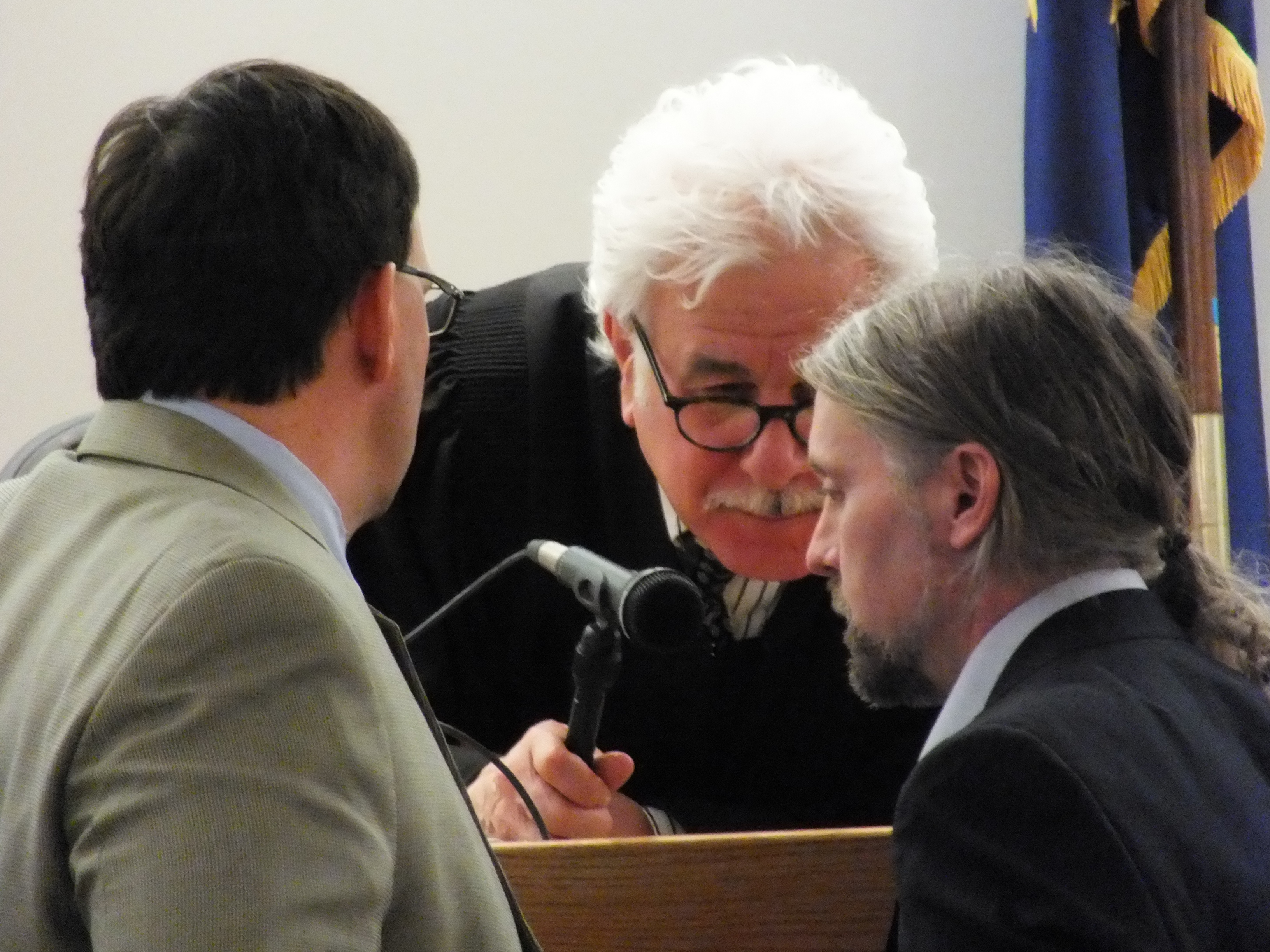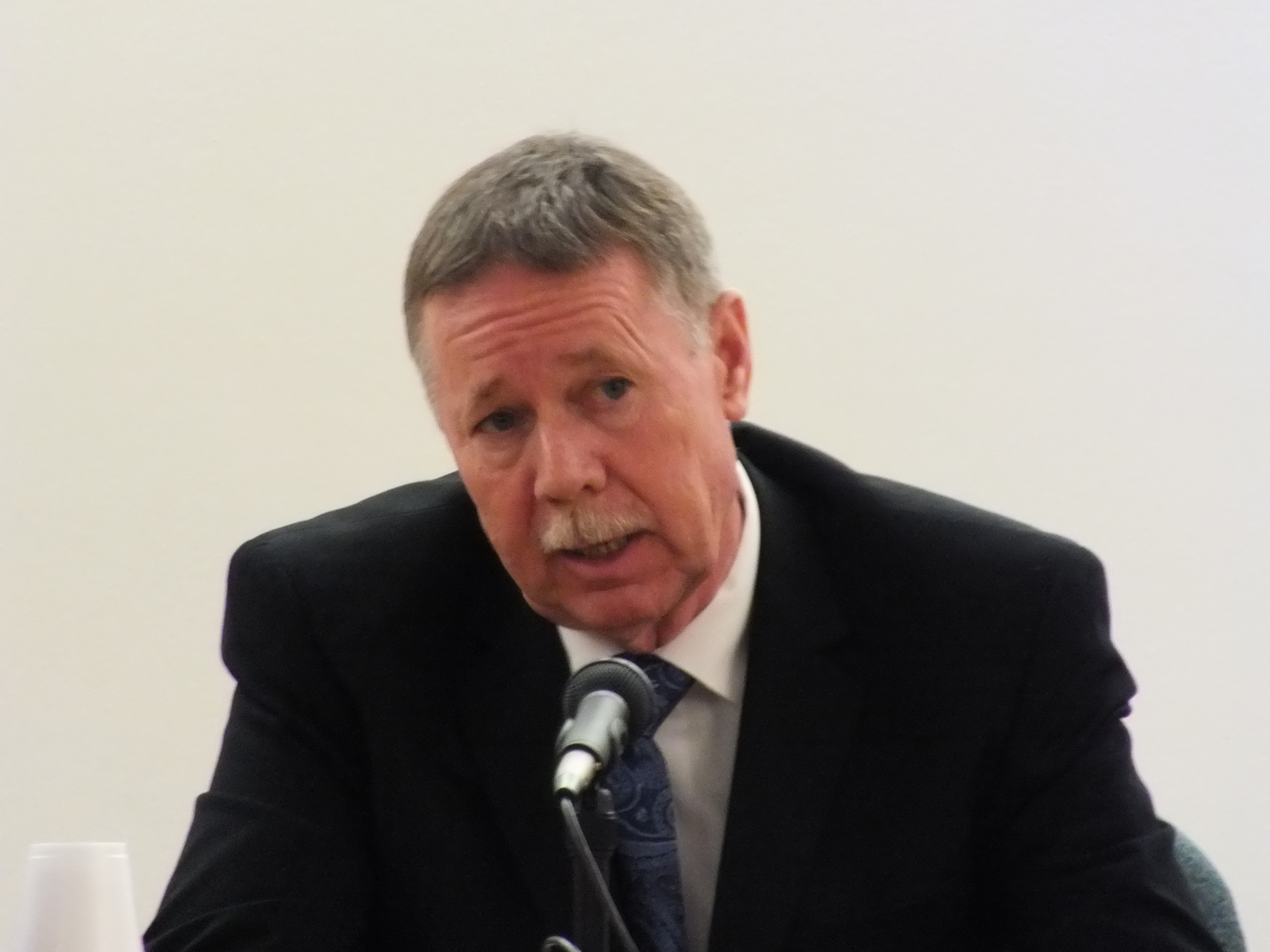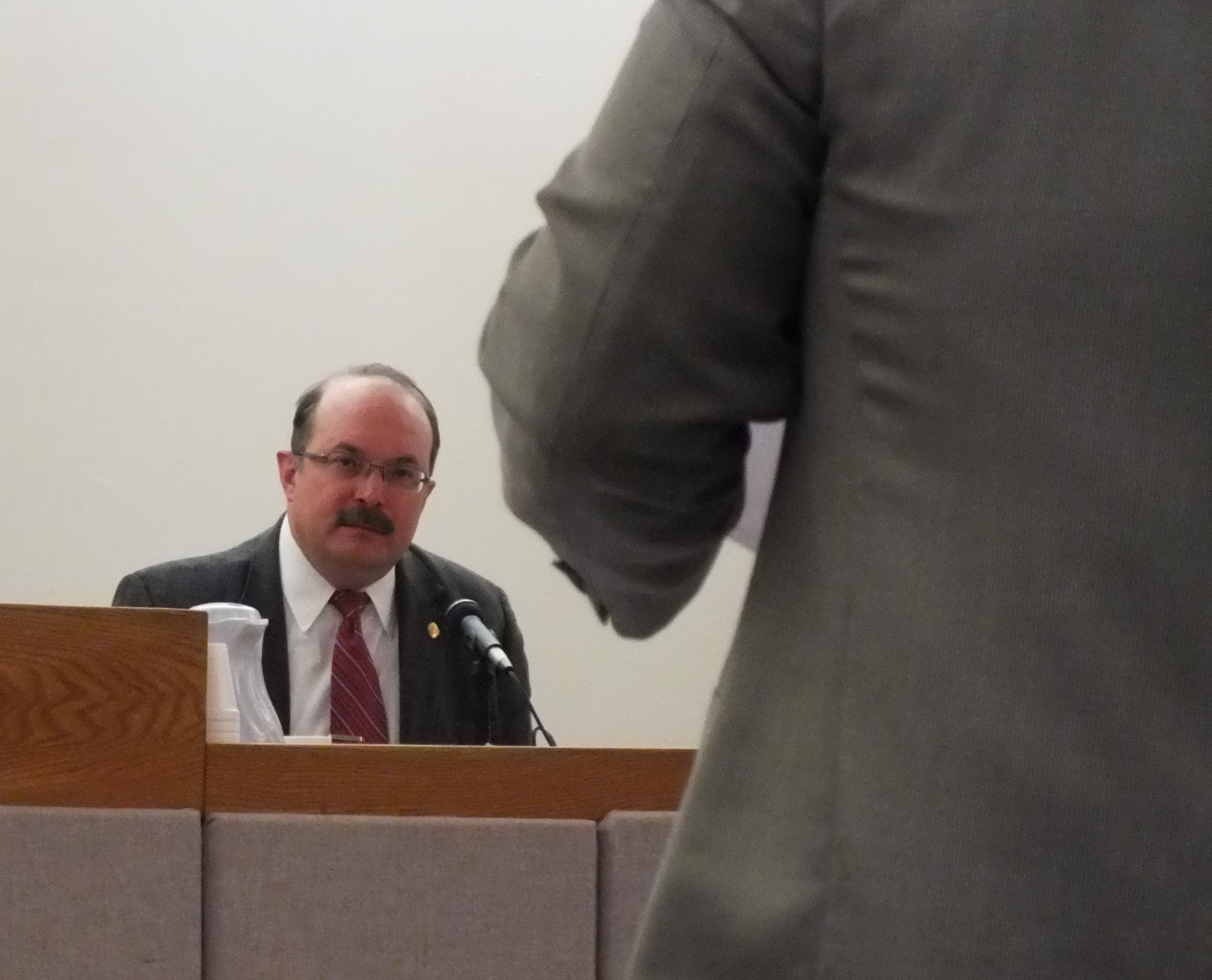Is it possible to un-ring a bell? How about putting the genie back in the bottle?
Those are just a few of the metaphors likely being considered by the judge and attorneys in the Robert Kowalski homicide trial underway in Juneau Superior Court. Now 53-years old, Kowalski is charged with first- and second-degree murder for the July 1996 death of Sandra Perry in Yakutat.

Jurors heard a powerful piece of testimony during Wednesday’s session and it may be difficult for them to simply forget it.
“It directly ties in the defendant to both cases in terms of modus operandi,” Judge Louis Menendez said. “The information offered by Sargeant Walsh is explosive.”
Menendez was referring to the testimony from a retired investigator about an injury on the forehead of Lorraine Kay Morinn who was killed by Kowalski near Kalispell, Mont. in March 2008. Prosecutors say it’s just one of many similarities to the Yakutat case.
In testimony to the court, Detective Sgt. Patrick Walsh said the bruise and abrasion appeared to be caused by the muzzle and front gun sight of a handgun. He apparently came to that conclusion only within the last week and it was different than his earlier testimony to a grand jury.
Judge Menendez and attorneys in the Yakutat case discussed a possible remedy late Thursday afternoon after jurors had been excused for the day.
Kowalski’s defense Eric Hedland was particularly incensed because he didn’t know Walsh had changed his mind.

“That goes to fundamental fairness, surprise, (and) a right to a fair trial that Mr. Fayette can say with a straight face – that he concedes – that he knew,” Hedland said. “He knew what he was going to say.”
Prosecutor James Fayette said the testimony should not be excluded because it was only a lay opinion, not offered by someone who is a toolmark specialist or expert witness.
“To the extent that his opinion about injury causation is a matter of expert opinion, I didn’t throw that first rock. My opponent did by eliciting the 2011 grand jury opinion,” Fayette said.
“Involving?” Judge Menendez asked.
“The eyeglasses,” Fayette responded. “He’s trying to put a benign or less sinister twist.”
Hedland had asked Walsh earlier about his belief that Morin’s forehead injury was caused by a thrown pair of eyeglasses.
Judge Menendez had to figure out if he could get the proverbial cat back in the bag. He said a mistrial would not be appropriate, and a continuance, or temporary time-out, in the trial would not be effective. He’ll instruct the jury to disregard Walsh’s testimony about the forehead injury. But that could be difficult since photos of Morin’s body have already been introduced as evidence and jurors may be constantly reminded of the testimony.

Judge Menendez has denied Hedland’s request that pictures of Morin be withdrawn as evidence.
Earlier on Thursday, focus of the trial returned to the Yakutat case after the previous day’s testimony outlining the Montana events.
Retired Alaska State Trooper Sgt. Randel McPherron, a cold case investigator and one of the original investigators of the 1996 Yakutat homicide, returned to the witness stand. He resumed the tedious task of reading aloud a set of transcripts of his interviews with Kowalski only a few days after Perry’s death.
Kowlaski: “I was walking. That’s what I hit.”
McPherron: “You were standing where I am now? You were holding the gun with both hands? You were trying to look out the win- window?”
Kowalski: “Then she sat up and she said ‘Boo’ and it went off. Inaudible sobbing.”
Kowalski offered different versions of what happened and conceded that he may have been too intoxicated on alcohol and high on marijuana to remember clearly. Kowalski initially said the gun went off after he was startled by Perry. He later said that he tripped on an object in their room, fell on the bed and Perry, and the shotgun went off when he tried to get up.
Original audio tapes of the interviews and other evidence were destroyed in 1998 after authorities declined to prosecute Kowalski and the case was closed.
On cross-examination, Hedland questioned McPherron about his tactics and technique as the interview of Kowalski shifted to an interrogation.
“You’re engaging in what’s called minimization? You give somebody what we call an out, right?” Hedland asked.
“I’m developing a theme,” McPherron answered. “Something that he can then take and rationalize his behavior in his mind to diminish his responsibility or make it seem less that he’s responsible.”
More testimony from other prosecution witnesses is expected on Friday.
